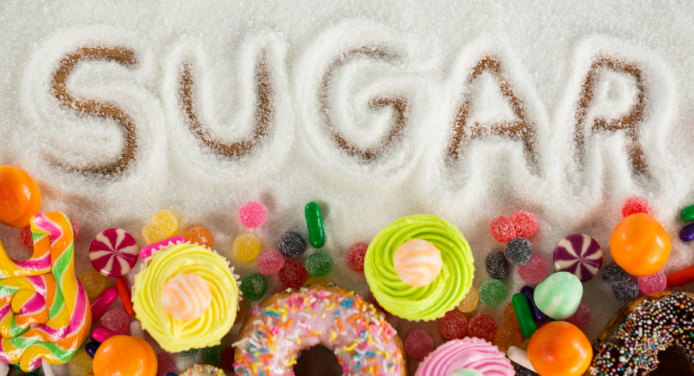Sugar reduction in foods has been a significant public health priority for governments and consumers. Consumption of foods high in sugar has been linked to numerous diseases and other physical health complications. Reducing sugar through the reformulation of products may be the answer.
Many believe that food manufacturers are dragging their feet on reformulating their products to reduce the amount of sugar, but some are leading the way. Let’s take a look at some of the ways manufacturers are achieving reducing sugar through reformulations.
Highlights:
- Sugar is one of consumers' biggest concerns regarding food and beverage choices.
- Sugar reformulation in confectionaries and alcoholic beverages is particularly popular.
- Consumers prefer natural sweeteners to artificial sweeteners in their sugar reformulations.
- New novel sugars are slowly making their way to the market and may provide manufacturers with additional options.
According to the IFIC’s (International Food. Information Council) 17th annual 2022 Food and Health Survey, which explored Americans’ perspectives and behavior related to food, “low in sugar” was the second most popular answer when participants were asked what the main attributes of healthy food were (32%). The most popular answer was “fresh” (37%). This illustrates the gravity of consumers’ perceptions of sugar and health. Additionally, this survey found that nearly three out of four, or 73% of respondents, answered that they are trying to limit or avoid sugars[1]. This data highlights the importance of reducing sugar for consumers and what food and beverage producers see as a potentially profitable and burgeoning market.
Soft drinks have long been used as the poster child for the obesity crisis, and beverage manufacturers have taken numerous steps to reduce the sugar content in many of these drinks.
According to UNESDA Soft Drinks Europe, the European soft drink industry reduced average added sugars by 3.6% between 2019 and 2021. While sugar reformulation in the soft drinks sector has been making significant strides, industry experts believe that alcoholic beverages, such as beer and cider, will be the next major group to look to reformulate[2].
Another central area of sugar reduction through reformulation has been confectionary and sweets. Significant product launches have occurred in these categories with low sugar/reduced sugar or even zero sugar claims.
If consumers want less sugar and producers are to meet these expectations, what options do they have to replace sugar in their formulations?
One thing has become clear in all areas of reformulation: while consumers demand certain ingredients be cut, they still expect the products to taste good. Therefore, one-way producers keep flavor while reducing sugars is to add ingredients with high flavor profiles, such as fruits, seeds, cocoa, and nuts. These added ingredients not only allow the product to remain tasty with a reduction of sugar but also allow companies to market them as having added protein, vitamins, or fibers.
Many brands choose sugar-free options, often relying on high-intensity sweeteners like Stevia. In these cases, the product can become overly sweet. Therefore, formulators often add cocoa powder to soften the taste through added bitterness.
Natural Versus Artificial Sugars
Clean labels and simple ingredient lists are becoming more and more favored by consumers across the globe. The choice of sweetener will become even more important to consumers as their interest in reduced-sugar options expands beyond sugar content alone. Consumers are starting to look more closely at product labels for the types of sweeteners used in their food and beverage purchases as clean label demands have become commonplace. People want to buy items that benefit them and the environment and are increasingly purchasing based on their principles. Because of this, they are drawn to product labels that are brief and emphasize natural components.
This has led consumers to favor natural over artificial sweeteners regarding sugar reformulations. Consumers expect reformulations to be plant-based, sustainable, and natural. Therefore, sweeteners like honey and stevia, which are plant-based, are increasingly favored. It also allows food and beverage manufacturers to claim “naturally sweetened,” which aligns more with consumers’ values.
Another major trend in sugar reformulations is using natural syrups or extracts. These natural sweetening syrups, such as rice, oats, and other cereals, are easy for consumers to identify with and understand, making them ideal choices for natural sweetening. Additionally, food and beverage manufacturers can make natural claims with these syrups, and they are often accessible to incorporate in reformulations.
New Sugar Alternatives
Three of the most exciting advances in the near future for sugar reformulation are Reb M stevia production, bioconversion, and precision fermentation. These advancements, once improved, have the potential to reduce sugar or eliminate it entirely and make low-sugar products more affordable and sustainable in the long term.
Another new area that might play a critical role in sugar reformulation is the development of flavor and taste modification techniques. Often marketed as natural flavors, these substances can help reduce sugar in baked goods where sweeteners like stevia are not allowed.
Other novel food sugars like allulose are still under regulatory review but could have future potential for reformulations.
Overall, it is clear that consumer demand is driving sugar reformulation efforts. Furthermore, food and beverage producers seem keener than ever to meet these expectations, and how they can achieve these goals has never been more plentiful.
To discover more about our analytical testing services, visit our ingredient industry page and contact us with any questions!
References
[1] International Food Information Council Foundation. (2022). IFIC 2022 Food and Health Survey Report. Food Insight. https://foodinsight.org/wp-content/uploads/2022/05/IFIC-2022-Food-and-Health-Survey-Report.pdf
[2] UNESDA - Union of European Soft Drinks Associations. (Year, if available). The European Soft Drinks Sector Has Achieved a 17.7% Reduction in Average Added Sugars Since 2015. UNESDA. https://www.unesda.eu/the-european-soft-drinks-sector-has-achieved-a-17-7-reduction-in-average-added-sugars-since-2015/
